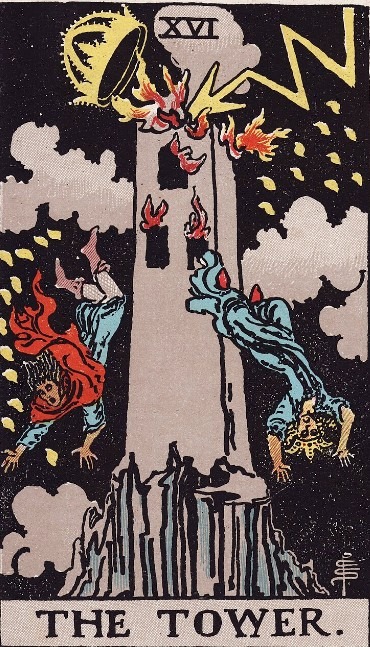
The fool’s journey continues with card 16, the tower struck by lightening.
Fresh from the devil card with its insights into the controlling power of the ego, the fool has arrived at this powerful symbol of destruction and disaster.
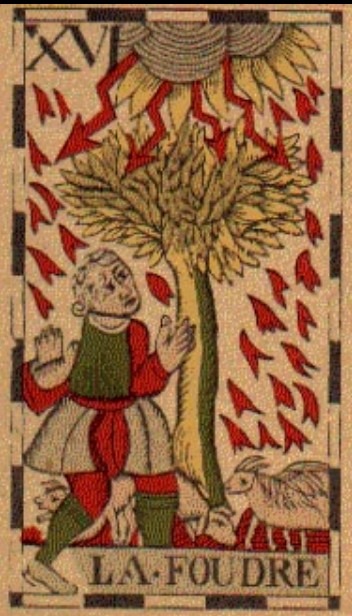
Early designs show a tree struck by lightening, as in the Belgian tarot, while the Minchaite tarot shows Adam and Eve emerging from a building unscathed, suggesting expulsion from the Garden of Eden.
Later cards resemble the Waite/Coleman Smith tower. A tall, crowned building has been struck by lightening which has caused fire. The top brickwork is cracked and people are falling from the tower to the ground. One of these figures wears a crown.
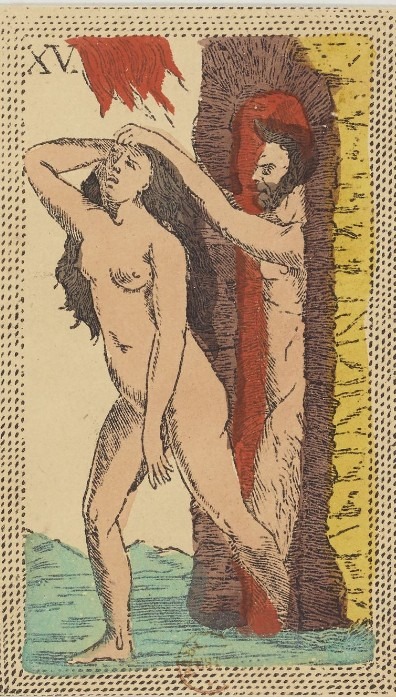
The fool is reminded of death in card 13, where a crowned king lay prostrate beneath the hooves of death’s white horse. Death and the tower are reminders of earthly wealth and prestige can be destroyed, often unexpectedly without warning.
The tower shows the force of nature, first seen in the empress, is not always benign. It can also cause great upheaval and tragedy.
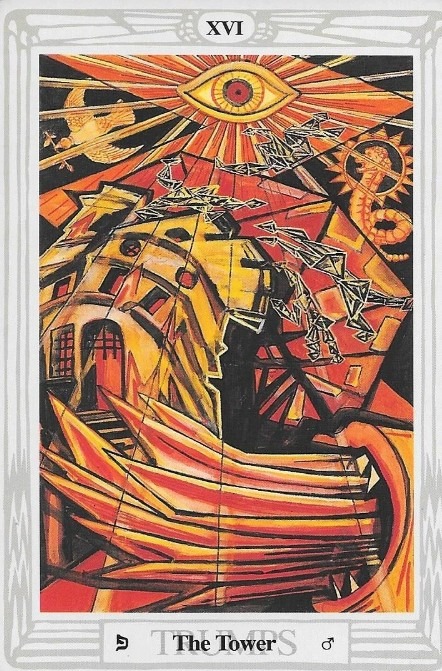
The card is said to historically represent the sin of pride, one the seven deadly sins of the early church, and a popular image in medieval times. It has also been related to the biblical tower of babel. When the church had supreme power over individual life, lightening was often seen as divine retribution or punishment.
As a psychological tool, the tarot has taken the fool step by step on an inner journey. He’s seen the structured mechanisms of the world around him and been introduced to concepts such as the power of creative action in the magician and mysteries guarded by the high priestess.
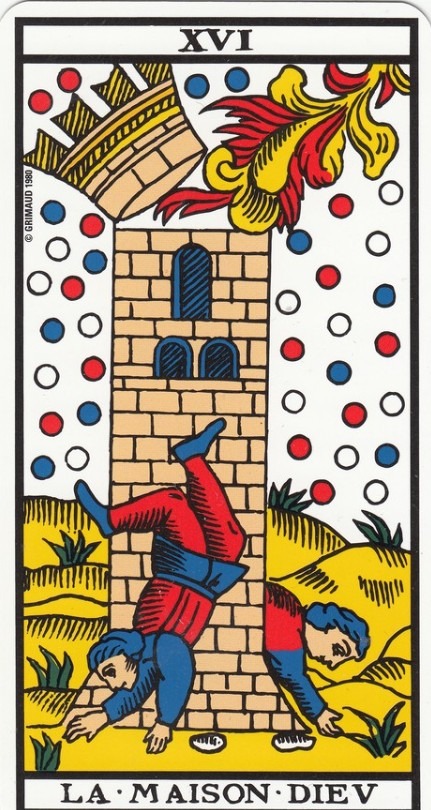
Strength offered reassurance. The hermit invited him to step aside and seek knowledge, while the hanged man offered a glimpse of the potential serenity of surrender.
He’s witnessed the arid landscape of the emperor, who prioritised success in the physical world, and seen how the charioteer had no reins so lacked control over opposing forces, his chariot trapped and stationary.
From a psychological perspective, the tower represents the ego. Death introduced the need to challenge the ego’s control while the devil showed the ego’s power can be overcome.
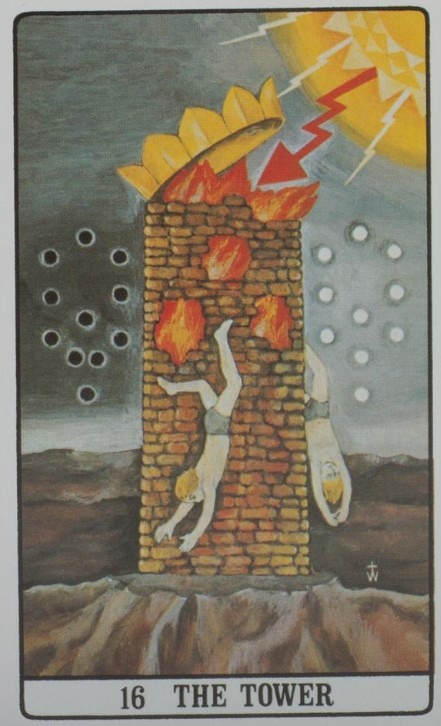
The tower represents what can happen if ego is left unchecked. It’s a symbol of ego satisfaction and fulfillment. The manifestation of desire for wealth, status and fame.
A dominant ego fosters the belief that self-worth can only be measured through possessions and priviledge. The more the ego achieves the more it wants.
The further we walk down the path of material aquisition, the further we risk finding ourselves blocked from the inner self and favouring surface rather than depth.
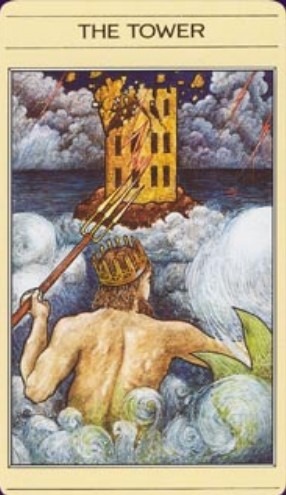
There comes a point where regardless of possessions, the inner self reaches a state of despair, manifesting as anxiety, depression and an increasing sense of separation.
For a while, activities and substances are used to block reality but they risk becoming essential coping mechanisms, often resulting in further mistakes.
In the worse situations, avoidane of reality can lead to death, either accidental or deliberate.
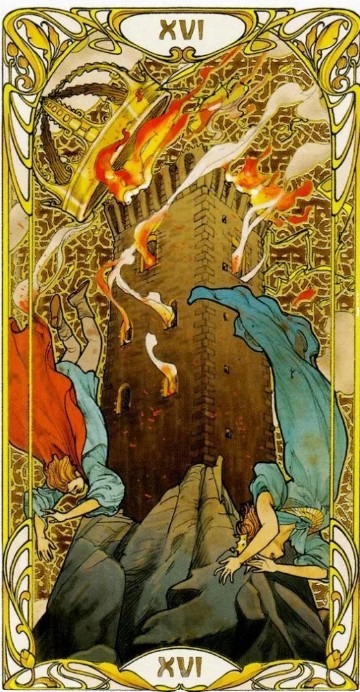
The bolt of lightening is an unavoidable force of nature.
It destroys the tower by cracking it open, exposing what it contains. The falling people realise too late the precariousness of their lives but this destruction is metaphorical as well as literal.
Falling need not be fatal.
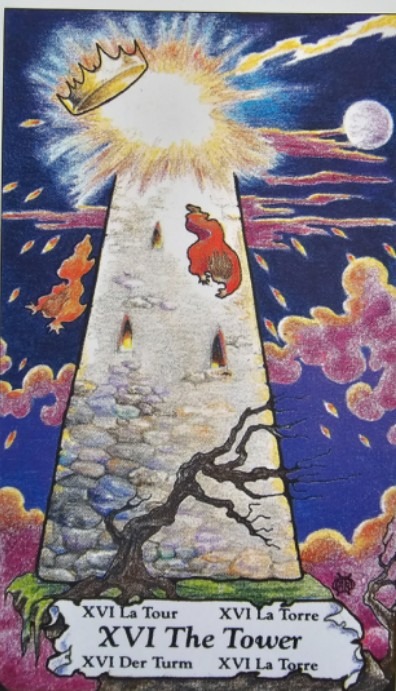
The devil has shown the chains that bind are less permanent than might be believed. Escape is possible but the process hard.
Without inner strength, external guidance and support, the ego will continue to dominate day after day, year after year.
For those who don’t, won’t or can’t free themselves from the ego’s control, it can take an external event to bring everything crashing down. This card 16. The disaster has happened and everything in the material world is falling apart.
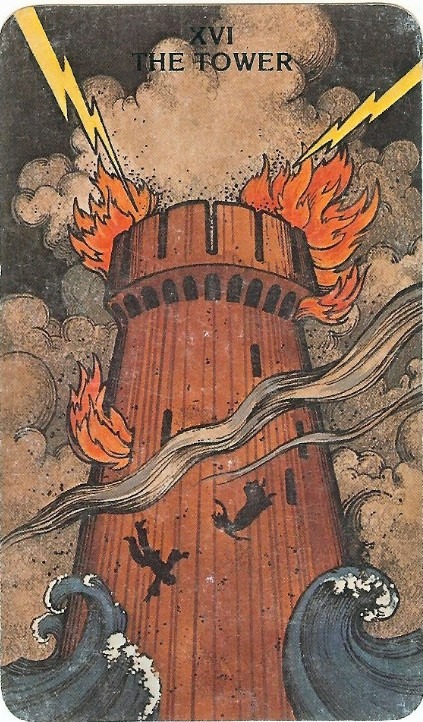
What lessons does the tower have for the fool?
The tower is built on solid foundations. The top has exploded, people have fallen and there are flames, but despite some damage, the brick structure remains mostly intact.
It can be rebuilt.
A bolt from the blue can be a natural disaster which destroys all that is familiar, a personal calamity through the death of loved ones, or maybe a financial crisis or health scare.
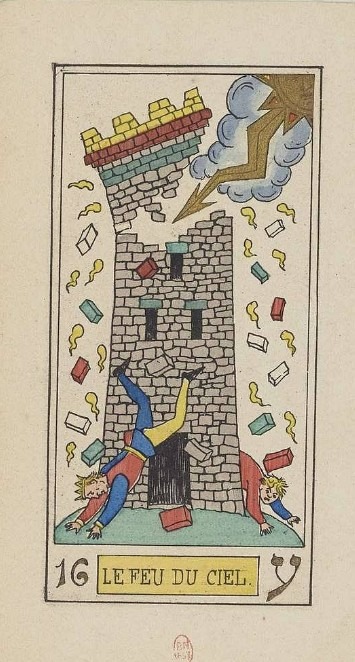
Whatever form it takes, the sudden change in circumstance means a transition. From this point on, change is essential, be that a recreation of the old or an opportunity to build anew. The experience reveals the fragility of life which hangs from a single thread and can be cut at any moment.
The outer world has been transformed. In a tower situation, the fool may feel he’s lost control over his known life and environment, but the cards have shown he has the inner power to manage how he responds.
Sometimes it’s necessary to clear the way for what lies ahead.
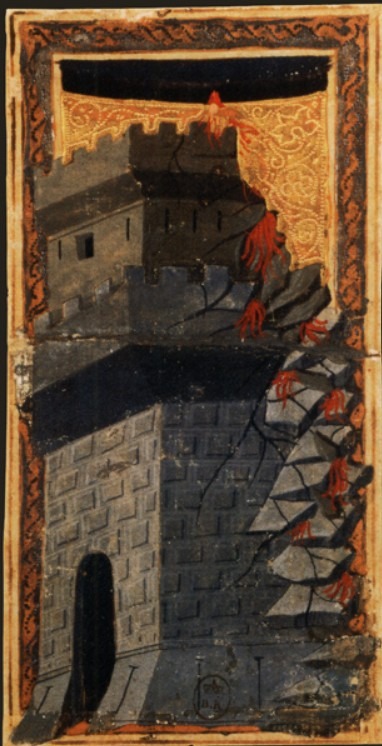
The destruction of the ego leaves the way clear for the fool to delve further into his layers of unconscious. Not every disastrous event will make a difference but they are potential opportunities for re-evaluation.
A separation or redundancy can feel devastating.
There is no fear like the loss of health or loved ones.
Accidents happen.
When the conscious world we take for granted has vanished, we understand too late what we took for granted. In the depth of grief for what is lost, and at the worst times of our lives, there remains a freedom to explore more deeply the aspects of self which have so far been hidden.
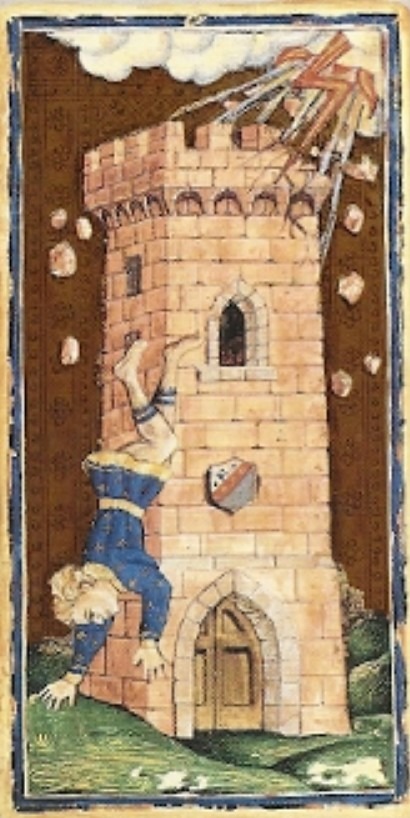
If we follow the message of the tarot, and accept all life is made from layers of energy, the tower is the door to revelation.
The fool is ready to step into the universal experience of wholeness and unity.
It’s been a long journey.
The next card is the star. It offers respite. Here is the restoration of peace and calm before the facing the unconscious of depths of the moon.
Join the fool as he takes the next step on his walk through the tarot.
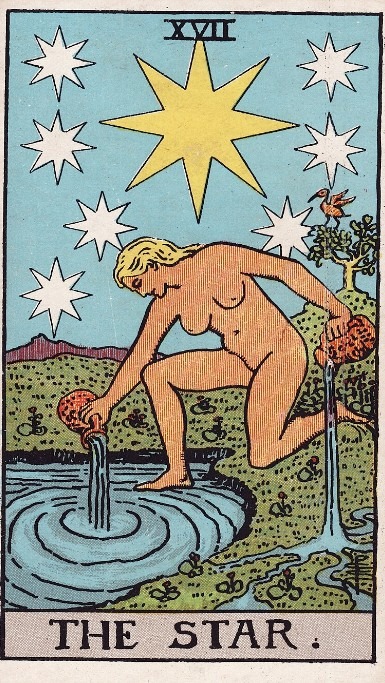
images my own, or copyright free from wikipedia commons and https://pixabay.com/